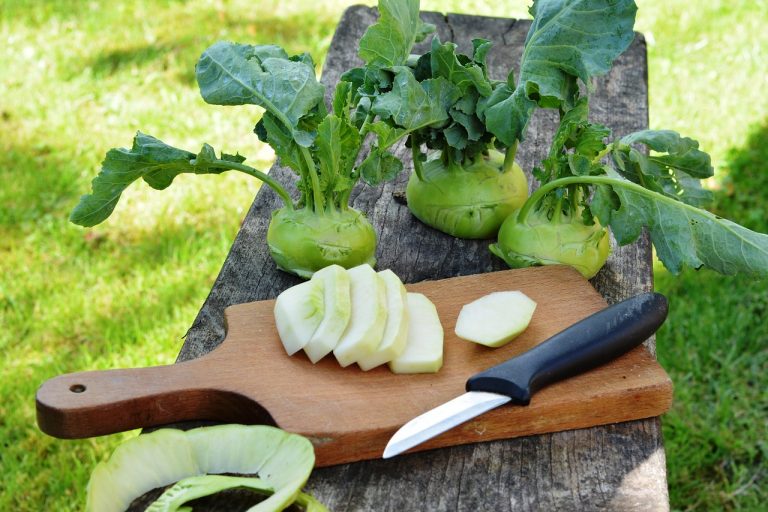
Kohlrabi cabbage is a stembled that looks like a turnip. To taste, this vegetable is similar to the stalk of young white cabbage, only sweeter and more tender. It contains a large amount of fiber, potassium, copper, vitamin C and other beneficial substances. Kohlrabi has a purple and green color, but only on the outside. Inside it is white.
The fruit retains its nutritional properties even during heat treatment, grows well and quickly. For storage for the winter, you must carefully choose a variety of cabbage.
Content
Selection of variety for storage
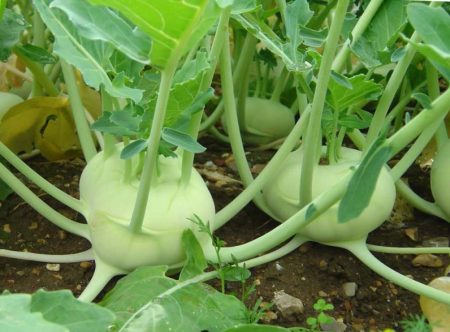
There are many different varieties of this delicious vegetable: Korist, Vienna, Russian size and others. The earliest variety is Korist. It ripens by mid-July and reaches 6-8 cm in diameter. Giant, Vienna, Russian size - these are later varieties of kohlrabi. Such cabbage grows until late autumn and reaches a diameter of 10-12 cm.
If you want to preserve the fruits for as long as possible, you should choose varieties of kohlrabi of late and medium types, with a denser structure, good resistance to frost. For example: Giant, Kossak F1, Violetta, Globus, Russian size, Karatago F1, Azur, Blue planet F1. They rarely crack and stiffen.
The types of cabbage that ripen in June are best used immediately, it is permissible to store them in the refrigerator for a couple of weeks - these are Moravia, Ateka, Sonata F1, Vienna White 1350 and others.
The larger the kohlrabi in diameter, the stiffer its root part.
Dates of harvesting kohlrabi cabbage for storage
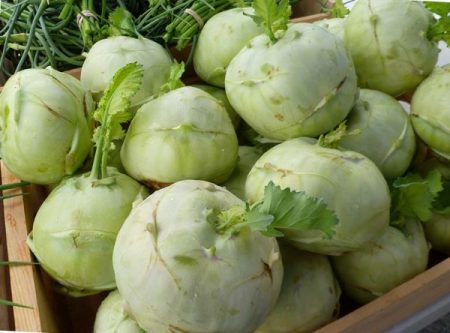
All varieties of kohlrabi have their own ripening and harvesting dates. Early ripening varieties ripen in 50-70 days, mid-ripening in 80-120 days, later in 120-180 days. Stem crops with a diameter of 6-8 cm are the softest and juiciest. Suppose the diameter of the fruit is 10-12 cm. Larger heads of cabbage quickly turn green and the fibers become very coarse.
It is being stored for storage in late September - mid-October. You can harvest at the end of October, but before the first frost. Nothing terrible will happen to her if the air temperature drops to -4 degrees.
How to determine the degree of maturity of a vegetable
The maturity of stem stems is very simple to determine - you just need to know its variety, most importantly, do not overwrite. All varieties are divided into 3 groups: early ripe 6-8 cm, mid-ripening 8-10 cm, late ripe 10-12 cm. They can be removed and smaller. But for storage, late ripe fruits of 10-12 cm in diameter are best suited, which are removed before the first frost.
How to collect kohlrabi cabbage
Kohlrabi is grown in high beds. She stands on a “leg” above the ground. Cabbage does not need to be dug up, just cut it down at the base of the root. Then cut the leaves, leaving the roots 1-2 cm. If the vegetable is planned to be taken immediately, then the leaves and root can be cut to the ground.
Early ripening cabbage is harvested selectively, upon reaching stem stems 6-8 cm in diameter. Later varieties of kohlrabi are harvested until the first frost in late September - mid-October, when its diameter reaches 10-12 cm.
Pay special attention to pest control, they can destroy the entire crop and damage the already collected head of cabbage in the store.
How to store
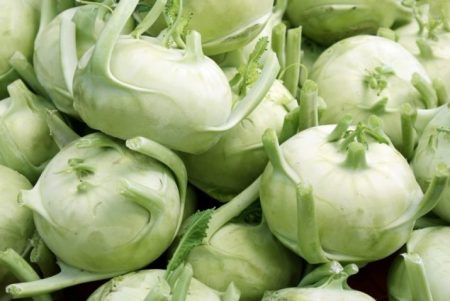
You can store kohlrabi cabbage in different ways:
- in the fridge;
- in the cellar;
- in the freezer;
- on the balcony, if it is glazed and insulated.
Preparing fruits in the cellar and on the balcony does not take much time. Clean it from the ground and let it dry for 1-1.5 hours in a dark place.Carefully inspect the cabbage heads - deep cracks can cause rapid damage to all fruits. After that, send the cabbage for storage.
In storage
Under certain conditions, in a cool storage, kohlrabi can be stored until the end of spring. The most popular methods are on special suspensions, in trellised containers or loose baskets, in sand or a bag of moss. In the room where storage will be organized, the optimum humidity level will be 95-100%, a stable temperature regime without falling below 0-2 degrees is important.
If you need to place the crop in limbo, stretch the wire from wall to wall, like a clothesline. Hang the vegetables on hooks 4 cm apart. Hooks can be made yourself out of hard wire in the shape of an infinity sign. Insert one end of the hook into the root of the fetus, the other - fasten it to a stretched thick fishing line. If there is no wire, pull the rope. Try to maintain a distance of 4 cm between attachment points.
You can store cabbage in boxes or baskets. It will take a lot of wet sand. Boxes cannot be placed on the floor. Place them on a slatted floor. Circulating air is needed so that vegetables do not begin to rot. Pour wet sand into a box or basket, then stack the fruit 4 cm apart and cover it with sand. So, you can lay cabbage in several layers. The last layer should be sand, as at the bottom of the box. When all layers of kohlrabi are laid and covered with sand, you need to cover the box with plastic wrap. Do not close tightly so as not to lock.
You can store kohlrabi cabbage in wet sand. To do this, pour 20-30 cm of river sand on the floor of the cellar or on the bottom of the box. Insert the stem-roots with the roots in the sand at a distance of 6 cm from each other. Check the crop twice a month and remove spoiled, rotted fruits.
Moss is a natural antiseptic that allows you to keep the cabbage juicy until spring, prevents the spread of the disease and mold. You can collect moss in the forest, from a swamp. Lay a good layer of moss at the bottom of the bag, about 10 cm high. Next, lay kohlrabi in 5-7 pieces, alternating in layers with moss. Cover the cabbage with moss on top and store in this form in the cellar.
For storing cabbage, choose whole stalks, without traces of damage and disease.
In the freezer
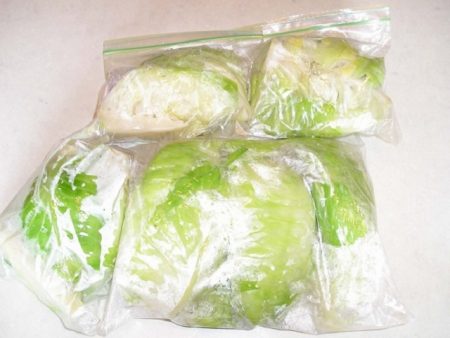
Kohlrabi can be stored in the freezer for as long as in the cellar. You can cook absolutely any dishes from it. Before cooking, defrost the cabbage optionally. Only ripe fruits are suitable for freezing. Freeze with cubes, straws, cubes or grate on a coarse grater. Kohlrabi goes well with other vegetables, for example: potatoes, cauliflower, carrots, green peas, broccoli. You can pre-cook a mixture of vegetables and cook delicious stew all winter.
Before freezing, rinse the stems with running water, dry and peel. Cut the cabbage into cubes, straws or cubes. Pour hot water for 2-3 minutes, drop it in a colander and rinse immediately in cold water. Dry on a towel, then place in vacuum plastic containers, bags. Sliced kohlrabi can also be processed in a double boiler for 3-4 minutes and frozen. Store grated cabbage on a coarse grater like a carrot - in a plastic bag for about 12 months in a freezer.
Before freezing, prepared and chopped kohlrabi should be covered with coarse salt. Leave on for 20-30 minutes so that bitterness and excess liquid come out of it, then rinse in running water.
In the fridge
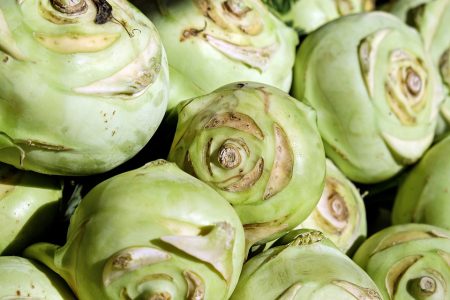
Fresh stems can be stored in the refrigerator, then the shelf life will be 1-2 weeks. First prepare the vegetables:
- cut the roots and leaves, leaving the cuttings 1.5 cm in size;
- wrap the cabbage with a damp cloth or wet wipes;
- put in a plastic bag;
- put in the refrigerator on the lower shelf.
As in the case of storage in the cellar, it is better not to wash the stalks:
- clean from the soil and dry;
- wrap with a damp cloth or paper;
- put in a plastic bag.
In this form, kohlrabi can be stored in the refrigerator for 20-30 days. To prevent cabbage from rotting and rotting, do not close the bag tightly. This storage option is suitable for fresh heads of cabbage.
Kohlrabi is well suited for workpieces. It can be pickled, salted, fermented as an independent dish, or in salads along with other vegetables. Any recipe for pickling and preserving vegetables is suitable for this.
If you need to save kohlrabi for 5-7 days, then you will need plastic vacuum containers. Wash the stems with running water, peel, cut into strips, cubes or cubes. Sprinkle with coarse salt for 25 minutes, rinse with cold water. Then dry on a waffle towel and place in vacuum containers.
On the balcony, loggia
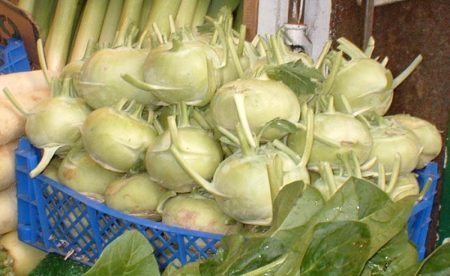
Storage of fruits on the balcony and loggia is almost no different from the storage methods in the cellar. Vegetables can be stored on the balcony if it is glazed and well insulated.
Maintain a constant cool temperature of about 0-2 degrees and a humidity of 95-100%.
To preserve the juiciness of the fruits, wrap them in paper and lay them on racks or shelves in one layer, leaving a distance between heads of about 5 cm.
If possible, make a shelf on the balcony. From the end, hammer nails into it or attach hooks. Tie the stem stalks behind the roots with a rope, as when stored in the cellar, and hang the vegetables at a distance of 4-6 cm from each other.
Keep kohlrabi on the balcony is best in wooden boxes. Separate the stems from each other with plywood or cardboard partitions and cover the cabbage with a thick cloth. If the balcony is not glazed, insulate the boxes for storing vegetables with 5 cm foam and cover with a warm blanket. Circulating air will save cabbage from the growth of bacteria and mold.
Kohlrabi cabbage grows well even in cold weather, so harvesting from later varieties can be done until winter.
Advice
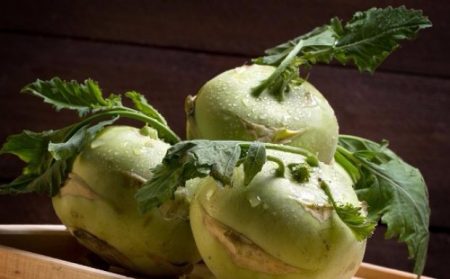
These recommendations will help keep Kohlrabi until spring:
- In order for the cabbage to grow juicy, the soil must be sufficiently moistened. With dry soil, the stems are stiff, rough and tasteless. Cold and heavy soil is also not suitable for growing kohlrabi.
- Seeds are best sown in a row at a distance of 40-60 cm, so that the optimal nutritional area remains.
- It is imperative to thin out the cabbage 5-7 days after seed emergence. Early ripening varieties should be left at a distance of 10-15 cm from each other, late-ripening varieties at a distance of 20-25 cm.
- The best size for late varieties is 10-12 cm in diameter and 6-8 cm for early varieties. It is not necessary to overwhelm the stems. Otherwise, the fibers will coarsen, and the cabbage will become stiff, tasteless, lose its useful properties. It will also be impossible to store such heads for a long time. Kohlrabi root is stored for a long time, sometimes until the summer.
- When stalks are stored in cling film, they should be periodically checked for condensation. If drops of water are found under the film, discard the old film. Dry the kohlrabi with a towel and replace the film.
Kohlrabi cabbage is one of the most unpretentious cabbage family crops, grows well, is not afraid of frost, has many different storage methods, and contains a large amount of nutrients. It can be fried, marinated, boiled, stewed, cooked with it casseroles, salads or eat raw. The variety of this vegetable allows you to choose the most suitable cultivar for storage and cooking. Kohlrabi can grow even a beginner summer resident.

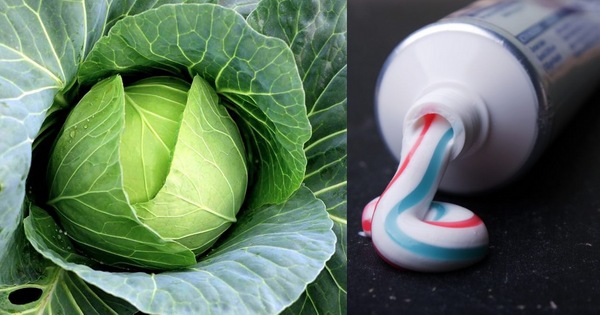
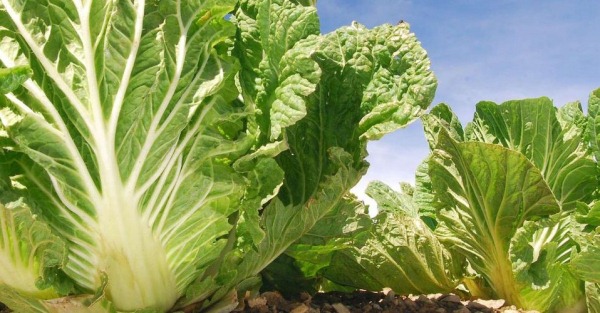
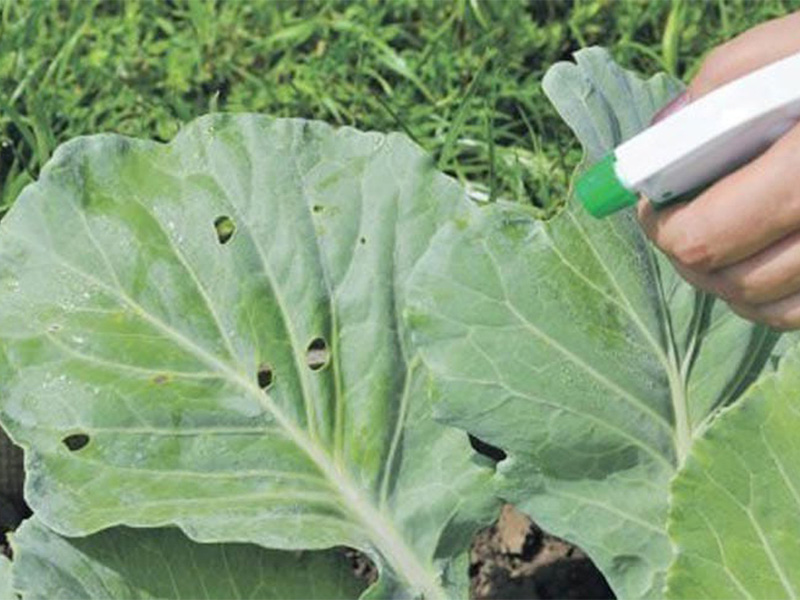
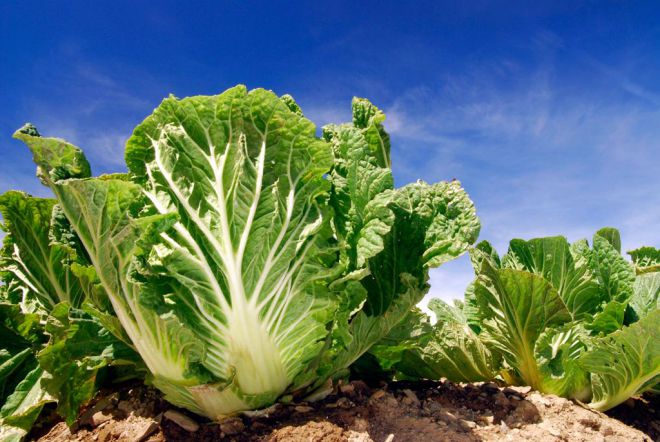 How to grow Chinese cabbage on your site?
How to grow Chinese cabbage on your site?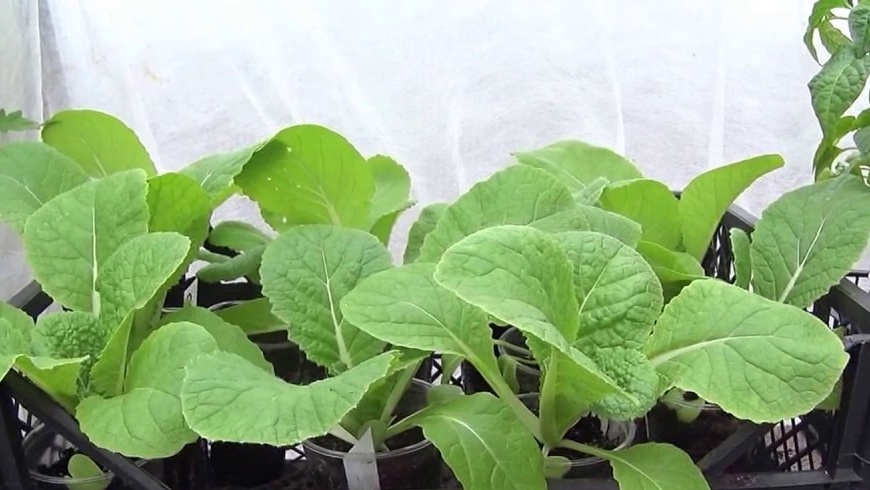 When to plant Chinese cabbage on seedlings in 2024
When to plant Chinese cabbage on seedlings in 2024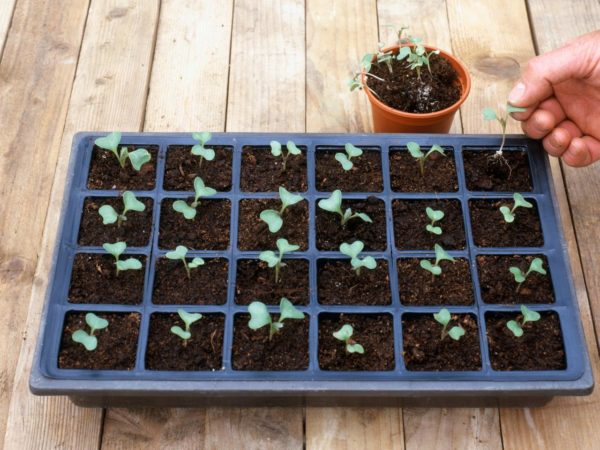 When to sow cabbage for seedlings in 2019 on the moon
When to sow cabbage for seedlings in 2019 on the moon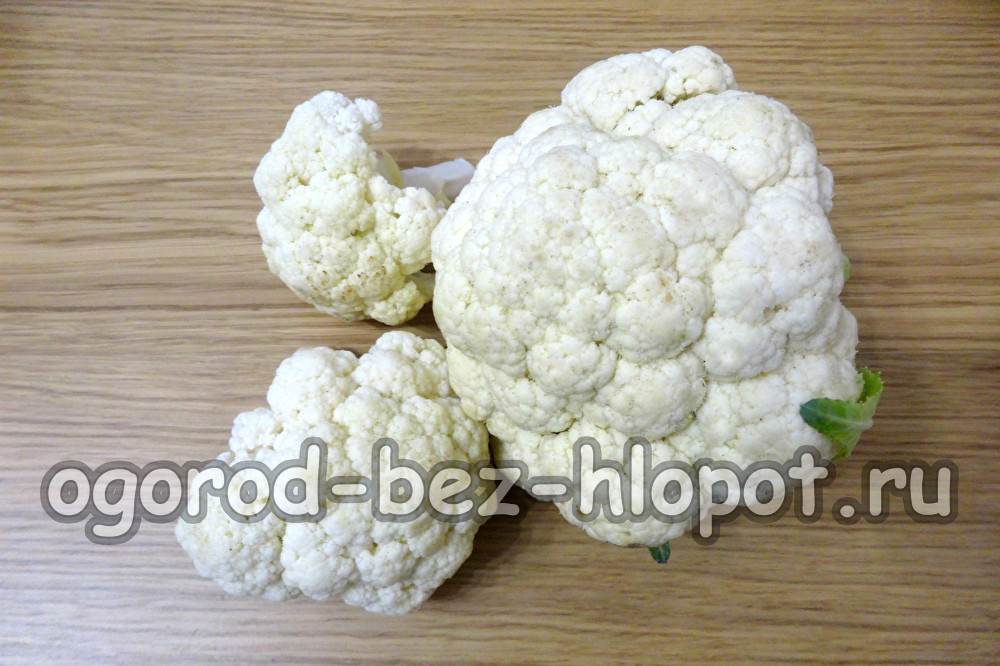 Cauliflower: how to grow large snow-white inflorescences
Cauliflower: how to grow large snow-white inflorescences